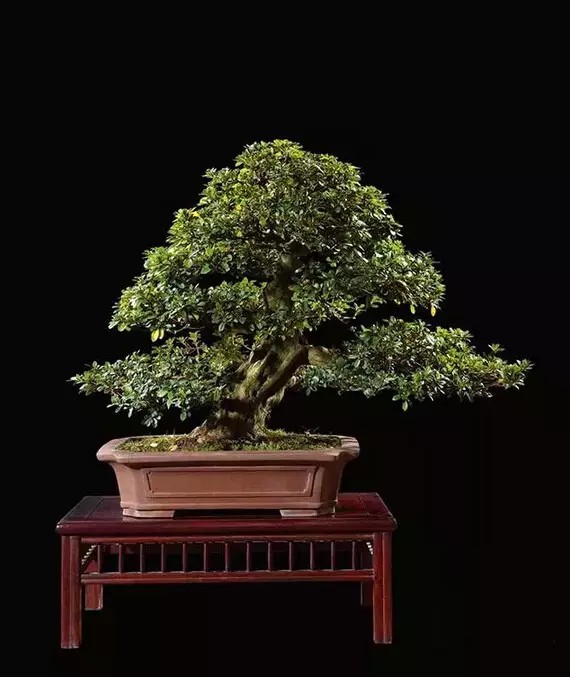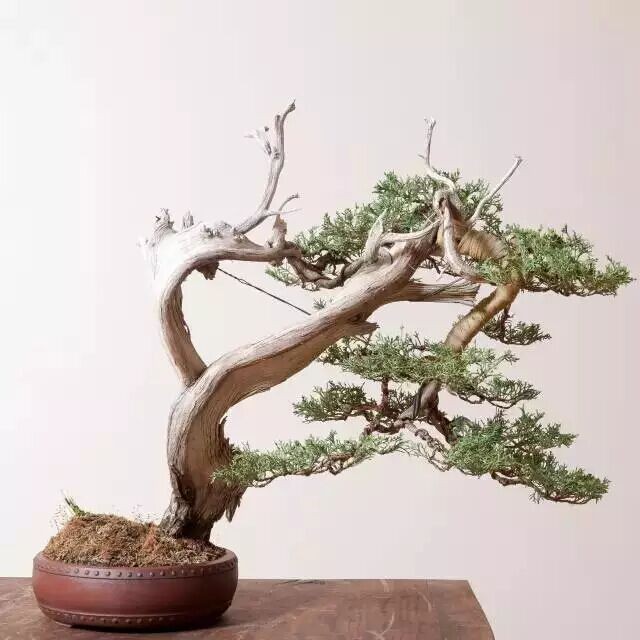Maintenance and Management of Landscape Bonsai
Bonsai is an artistic treasure developed on the basis of potted plants and stone play in our country, which takes plants, mountains and rocks as materials and uses the artistic modeling technique of "shrinking dragon into inch, thousands of miles away" to express the natural landscape in the basin to express the author's thoughts and feelings. It requires that the scenery, basin, shelf, inscription and other aspects of mutual harmony, but also must have a certain artistic realm and the creator's certain thoughts and feelings.

First: watering
The water basin bowls are shallow, hold less water, and evaporate quickly, especially in the hot summer, so it is necessary to often irrigate, change and water, keep the water in the basin continuously, so that the water-absorbing stone can be moist, which is conducive to the growth of vegetation and moss. If planted on hard stone, it is necessary to ensure water supply. The cement bottom of the huge landscape bonsai should leave a drainage hole, which is usually blocked with a plug, and the plug is used to drain the sewage when flushing with water. Rocks and plants should be often watered and kept moist so that plants (including moss) can grow normally.
Second: fertilization
The roots of plants and trees on the landscape bonsai are placed in the limited soil, so it is difficult for the roots to go deep into the soil, and it is not convenient to change the soil. In order to supply the nutrients needed for the growth of trees, regular fertilization is necessary. But fertilization can not be excessive, it is appropriate to use thin, colorless and tasteless liquid fertilizer, it is best to use bean cake, hemp dregs, beans and other bubble water to make liquid fertilizer to irrigate; plants with flowers and fruits can water Amoy rice to promote the growth of flowers and fruits; sheet fertilizer and granule fertilizer can also be used, but do not be excessive.
Third: pruning
The trees of landscape bonsai are not the main body of bonsai, they only play a foil role, and can not be allowed to grow too big to destroy the shape. Therefore, trees must be pruned properly, mainly by cutting off dense branches, weak and diseased branches, dry and withered branches and transverse branches, and removing overdense and large leaves to integrate the landscape with the trees.
Landscape bonsai is a kind of bonsai mainly for viewing rocks. In order to enhance the reality of bonsai and make bonsai have more vitality, people will plant some graceful plants such as asparagus, moss, Milan, rhododendron and so on, in order to achieve the best appreciation effect. The maintenance of landscape bonsai is mainly the maintenance of these plants in the basin.
Landscape bonsai generally use little soil, the development of plant roots is limited, improper management is very easy to cause plant drying, so we must be more careful conservation in order to get the best ornamental effect. First of all, we have to confirm the phototaxis of the plants in the bonsai. If the plants planted are semi-negative plants such as five-needle pine, asparagus, camellia, orchid, rhododendron, etc., then we should keep the bonsai in a place with scattered light as far as possible, but the prerequisite must be well ventilated. If the plants planted on the rocks are Milan, pomegranate, cypress and other light-loving plants, they should be placed in sunny places at ordinary times, but pay attention to appropriate shade in summer.
No matter which kind of plant, the most important thing is to spray more water to the plant to maintain the humidity of the soil and the environment, especially in the dry and windy spring and summer season, pay more attention to ensure the humidity of the air, otherwise it is easy to cause the dryness of plant leaves. Attention should be paid to the way of watering, and spraying is recommended, because excessive water potential will wash away the soil. In addition, the water in the basin should be changed frequently, and the pots should be cleaned and kept clean so as to increase the overall ornamental effect of bonsai.
The growth of plants must have an adequate supply of nutrients, and the soil planted on landscape bonsai is very few, and it is inconvenient to change soil, so plants are prone to lack of nutrients, so fertilization in daily maintenance is particularly important. We can usually configure some thin nutrient solution, try to apply thin fertilizer frequently, persevere can get the ideal effect. If the plant has too little soil, you can add new soil at any time. Pay attention to the way when mending the soil, do not stain other parts of the rocks, after all, it is more troublesome to clean.
Most of the landscape bonsai will grow with bryophytes, if properly maintained, the growth rate of moss will be very fast, it is easy to block the original texture of the rocks, lack of ornamental. If this happens, it needs to be cleaned up in time, scraping off some unnecessary moss and maintaining the original clear stone appearance. Other plants grown on mountains and rocks should also be pruned frequently to prevent branches and leaves from growing too much.
In addition, the cleaning work of rocks should also be paid attention to. Usually, the opportunity of spraying water to plants can be used to wash rocks, remove dust and prevent the accumulation of dirt and other dirt.
Time: 2019-06-04 Click:
- Prev

Bonsai appreciation of trees / stumps
Bonsai is one of the few objects with rich colors and gives people serenity and condensation of time. A Zen phrase reveals the secret of heaven! Tree stump bonsai is referred to as stump bonsai. Woody plants are often used as materials to select plants with graceful posture, short plants, compact leaves, long life, resistance to pruning, strong resistance and easy modeling.
- Next

Sabina vulgaris (bonsai)-the only living fossil of plants
From ancient times to the present, the world does not hesitate to express its favor for pines and cypresses. In the Preface to Pines and cypresses, Bao Zhao of the Northern and Southern dynasties said: pines and cypresses were ordered to be alone, and the generations did not decline. Su Zhe in the Sansu Middle School of the Song Dynasty also wrote in his Fu Xu of Poria cocos: cold and summer cannot be changed, years cannot be defeated, but pines and cypresses are the case.
Related
- Fuxing push coffee new agricultural production and marketing class: lack of small-scale processing plants
- Jujube rice field leisure farm deep ploughing Yilan for five years to create a space for organic food and play
- Nongyu Farm-A trial of organic papaya for brave women with advanced technology
- Four points for attention in the prevention and control of diseases and insect pests of edible fungi
- How to add nutrient solution to Edible Fungi
- Is there any good way to control edible fungus mites?
- Open Inoculation Technology of Edible Fungi
- Is there any clever way to use fertilizer for edible fungus in winter?
- What agents are used to kill the pathogens of edible fungi in the mushroom shed?
- Rapid drying of Edible Fungi

